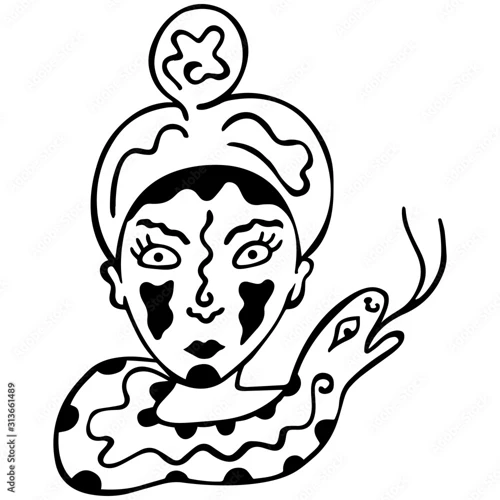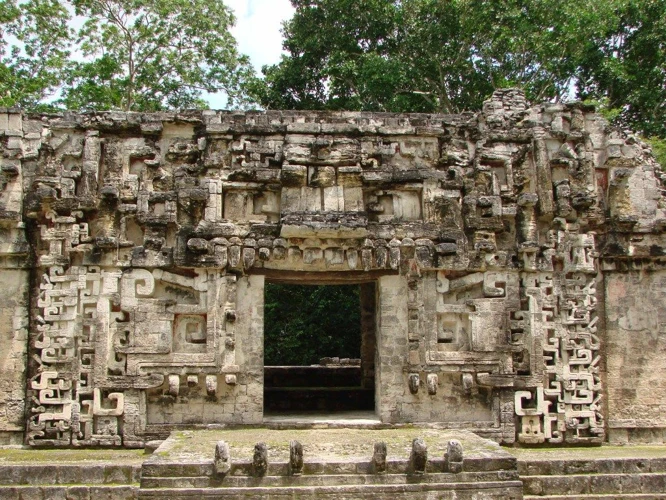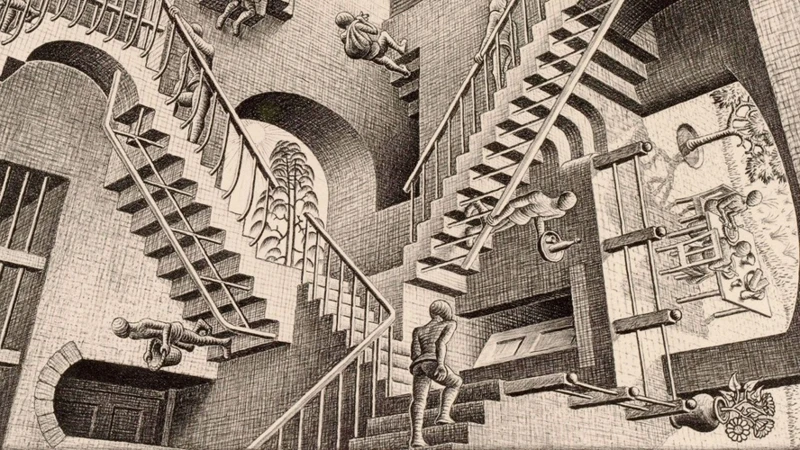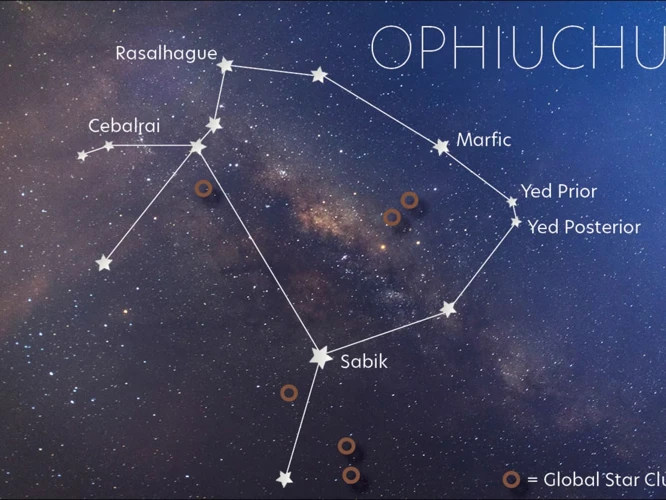The Influence of Mayan Art and Architecture is a captivating exploration into the rich cultural heritage of the ancient Mayan civilization. With their distinctive art forms and awe-inspiring architectural structures, the Mayans left an indelible mark on the world. This article delves into the fascinating world of Mayan art and architecture, uncovering the symbolic meanings behind their artwork and the ingenious construction techniques employed in their architectural marvels. It highlights the lasting influence of Mayan art and architecture on contemporary art, showcasing modern adaptations and the continuity of Mayan inspirations in today’s artistic landscape. Join us on this journey to unravel the enigmatic beauty and enduring legacy of the Mayan civilization.
Contents
- Mayan Art
- Mayan Architecture
- Influence on Contemporary Art
- Conclusion
-
Frequently Asked Questions
- What are some distinct features of Ancient Mayan art?
- What were the main purposes of Mayan art?
- What are some common symbols found in Mayan art?
- What were the construction techniques used in Mayan architecture?
- What are some notable Mayan architectural structures?
- Do we see any influence of Mayan art and architecture in contemporary art?
- Are there any modern adaptations of Mayan art?
- What is the significance of preserving Mayan art and architecture?
- Are there any ongoing archaeological discoveries related to Mayan art and architecture?
- Where can I see Mayan art and architecture today?
- References
-
Frequently Asked Questions
- What is Mayan art?
- What were the ancient Mayan art forms?
- What do the symbols in Mayan art represent?
- What are some common symbols in Mayan art?
- What were some famous Mayan structures?
- How did the Mayans construct their buildings?
- How has Mayan art influenced contemporary art?
- What are some modern adaptations of Mayan art?
- How does Mayan art continue to inspire artists today?
- What can we learn from Mayan art and architecture?
- References
- Read More
Mayan Art

Mayan art is an intriguing and diverse reflection of the ancient Mayan civilization’s cultural expression. With exquisite pottery, intricate sculptures, and vibrant murals, Mayan art forms captured the essence of their beliefs, traditions, and daily life. These ancient masterpieces often depicted mythical creatures, gods, and spiritual rituals, providing a glimpse into the Mayan worldview. The art incorporated a wide range of symbols and meanings, such as maize representing sustenance and fertility, jaguars symbolizing power and royalty, and snakes representing the cycle of life and death. The depth and complexity of Mayan art continue to fascinate art enthusiasts and archaeologists alike, offering a remarkable window into the ancient Mayan civilization and their artistic legacy.
Ancient Mayan Art Forms
Ancient Mayan art forms encompassed a diverse range of mediums and styles, reflecting the vibrant creativity and cultural significance of the Mayan civilization. One prominent art form was pottery, where Mayan artisans skillfully crafted vessels, plates, and figurines. These pottery pieces showcased intricate designs, often depicting scenes from mythology, religious rituals, and everyday life. The Mayans also excelled in sculpture, creating exquisite works in materials such as jade, basalt, and limestone. Sculptures typically represented deities, rulers, and sacred animals, capturing their power and symbolism with remarkable detail. Another notable art form was mural painting, which adorned the walls of temples, palaces, and public buildings. These elaborate murals portrayed historical events, mythological narratives, and the accomplishments of rulers. The mix of vibrant colors, intricate details, and symbolic imagery made Mayan murals visually captivating and spiritually significant. Additionally, Mayan artists expressed their creativity through textile weaving. Intricately woven textiles showcased stunning motifs and patterns, often inspired by nature and the spiritual realm. These textiles held social and cultural significance, representing the status and identity of individuals within Mayan society. Whether it was pottery, sculpture, murals, or textiles, each ancient Mayan art form reflected the intricate connection between art, spirituality, and daily life, providing a glimpse into the rich tapestry of Mayan culture.
Symbols and Meanings
Mayan art was rich in symbolism and deeply rooted in the beliefs and cosmology of the ancient Mayan civilization. The intricate designs and motifs found in Mayan artwork communicated a wide range of meanings and ideas. One of the most prominent symbols in Mayan art was the maize plant, which held great significance as a symbol of sustenance and fertility. The maize represented the life-giving force and portrayed the cycle of growth and abundance. Another prevalent symbol was the jaguar, which symbolized power, strength, and royalty. The jaguar was often associated with Mayan gods and rulers, highlighting its sacred and revered status. Snakes were also commonly depicted in Mayan art and held symbolic meanings related to the cycle of life, death, and rebirth. These serpents were often portrayed with feathers and other adornments, linking them to the celestial realm and the gods. The serpent’s shedding of its skin represented transformation and renewal. Mayan art also incorporated glyphs and hieroglyphics, which served as a written language and conveyed complex narratives and historical events. It is fascinating to delve into the realm of Mayan art symbols and meanings, as they provide insights into the rich cultural and spiritual beliefs of this ancient civilization.
Mayan Architecture

Mayan Architecture showcases the remarkable engineering prowess and artistic vision of the ancient Mayan civilization. The Mayans constructed awe-inspiring structures utilizing innovative construction techniques and a deep understanding of mathematics and astronomy. These architectural marvels, such as the pyramids, temples, and palaces, were designed with a purpose, serving as ceremonial centers, administrative hubs, and even astronomical observatories. The ancient Mayans ingeniously incorporated elements of their natural surroundings into their architecture, creating a harmonious blend of man-made structures and nature. The construction techniques employed, including the use of corbel arches, limestone blocks, and precise alignments based on celestial events, still astound architects and historians to this day. The enduring legacy of Mayan architecture can be witnessed in iconic sites like Chichen Itza, Tikal, and Palenque, drawing visitors from all over the world to witness the breathtaking splendor of these ancient structures.
Ancient Mayan Structures
Ancient Mayan structures were awe-inspiring architectural marvels that showcased the advanced engineering and mathematical prowess of the Mayan civilization. These structures served various purposes, including religious ceremonies, governmental functions, and residential areas. One notable example is the Temple of Kukulkan at Chichen Itza, which is a magnificent pyramid with a unique architectural design. The temple consists of four sides, each with 91 steps, totaling 364 steps altogether. The top platform makes the 365th step, representing the number of days in a solar year. The Great Ballcourt at the ancient city of Coba is another remarkable structure. It is the largest ball court in Mesoamerica, spanning over 500 feet in length, and features intricately carved stone rings known as “hoops.” The acoustics are extraordinary, allowing even the faintest whisper to travel across the court. Additionally, the Palenque archaeological site boasts stunning structures such as the Temple of the Inscriptions and the Palace, which have intricate carvings and hieroglyphic inscriptions showcasing the Mayan writing system. These ancient Mayan structures stand as a testament to the remarkable architectural achievements of the Mayan civilization that continue to captivate and inspire visitors today.
Construction Techniques
Ancient Mayan architecture is renowned for its remarkable construction techniques, which allowed the creation of massive and enduring structures. One of the most notable techniques employed by the Mayans was the use of lime-based mortar, made by heating limestone and combining it with water and natural additives. This mortar acted as a binder, holding the stones together and providing structural stability to the buildings. Additionally, the Mayans utilized a unique building method known as the corbel vault. This technique involved progressively overlapping layers of stones that narrowed inwards, resulting in a self-supporting arch. The corbel vault technique was employed in the construction of magnificent structures such as the iconic El Castillo pyramid at Chichen Itza.
Another impressive construction technique utilized by the Mayans was the temple slope. Mayan temples were carefully designed with steep slopes on their sides, which not only created a majestic visual impact but also served a practical purpose. The steep slopes allowed rainwater to drain quickly, preventing erosion and maintaining the structural integrity of the buildings. The Mayans ingeniously incorporated ventilation systems into their architecture. By creating small openings and pathways within the structures, they were able to promote airflow and regulate temperature, making the interiors more comfortable.
The precision and meticulousness with which the Mayans executed their construction techniques is evident in the longevity of their architectural wonders. The use of lime-based mortar, corbel vaults, temple slopes, and ventilation systems ensured that the Mayan structures stood the test of time, with some of them still standing proudly to this day. These remarkable construction techniques not only highlight the advanced engineering prowess of the Mayans but also demonstrate their profound understanding of materials and their environment. Exploring the architectural achievements of the Mayans offers a glimpse into their enduring legacy and their mastery of construction techniques.
To read more on fascinating astronomical phenomena, check out our article on exploring the event horizon of black holes.
Influence on Contemporary Art

The influence of Mayan art and architecture can be seen in contemporary art, providing a testament to the enduring impact of this ancient civilization. Artists today draw inspiration from the vibrant colors, intricate patterns, and symbolic motifs found in Mayan art. Some incorporate these elements into their own creations, infusing their work with a touch of Mayan aesthetic. Others take a more conceptual approach, exploring themes of spirituality, mythology, and cultural heritage that parallel the Mayan worldview. The continuity of Mayan inspirations in modern art showcases the timeless appeal and relevance of the Mayan artistic tradition. Whether it’s in paintings, sculptures, textile art, or even digital art, the echoes of the Mayan civilization ripple through the artistic landscape, forging a connection between ancient traditions and contemporary expressions.
Modern Adaptations
Modern adaptations of Mayan art and architecture have found their way into various aspects of contemporary culture. In the realm of visual arts, artists draw inspiration from Mayan motifs, techniques, and symbolism to create unique and captivating pieces. Painters incorporate vibrant colors and intricate patterns reminiscent of ancient Mayan murals, while sculptors reimagine Mayan deities and mythological figures in their creations. Additionally, the influence of Mayan art can be witnessed in the realm of tattoo artistry. Many people choose to ink their bodies with Mayan-inspired designs, paying homage to the ancient civilization’s rich artistic heritage.
Mayan architecture also continues to inspire contemporary architects and designers. The distinctive features of Mayan structures, such as steep and layered pyramids, intricate carvings, and celestial alignments, have influenced the design of modern buildings and landmarks. The use of geometric patterns and natural materials in architecture is a direct nod to the Mayan construction techniques. The incorporation of Mayan-inspired elements can be observed in buildings, hotels, and resorts in regions with Mayan heritage, where ancient motifs and architectural styles merge with modern aesthetics to create unique and visually striking spaces.
Mayan art and architecture have made an impact in other areas of contemporary culture. The fashion industry often draws inspiration from Mayan textiles, incorporating traditional patterns and techniques into clothing and accessories. Mayan-inspired jewelry, featuring symbols and motifs from ancient Mayan culture, has gained popularity among enthusiasts of artisanal jewelry. Even in the realm of graphic design and advertising, the influence of Mayan art can be witnessed in the use of bold colors, intricate patterns, and symbolic imagery.
The modern adaptations of Mayan art and architecture serve as a testament to the enduring legacy of the ancient civilization. By incorporating elements from the Mayan culture into different artistic mediums, contemporary artists and designers pay homage to the extraordinary craftsmanship and creativity of the Mayan people. These adaptations ensure that the spirit of Mayan art and architecture lives on, allowing future generations to appreciate and be inspired by this captivating ancient civilization.
The Continuity of Mayan Inspirations
The Continuity of Mayan Inspirations can be witnessed in various forms within contemporary art and design. Artists and designers continue to draw inspiration from the rich visual language and symbolism of Mayan art and incorporate it into their creations. They explore the intricate patterns, bold colors, and spiritual themes that were prevalent in Mayan artwork. In the realm of fashion, Mayan-inspired prints and motifs can often be seen on clothing and accessories, adding a vibrant and ethnic touch to modern fashion. Mayan-inspired jewelry, featuring elaborate designs reminiscent of ancient Mayan adornments, has also gained popularity. In the realm of interior design, elements of Mayan art such as geometric patterns or symbolic images are incorporated into decorative items, furniture, and architecture, creating a fusion of the ancient and contemporary aesthetics. The continuity of Mayan inspirations is a testament to the enduring appeal and timeless beauty of their art, transcending centuries to inspire and captivate artists and designers to this day.
[Link to fascinating history of planetary alignments](/fascinating-history-planetary-alignments/)
Conclusion

In conclusion, the influence of Mayan art and architecture is profound and far-reaching. The ancient Mayans left behind a legacy of artistic brilliance and architectural ingenuity that continues to captivate and inspire. Their art forms, with their intricate detailing and symbolic meanings, provide a window into the Mayan worldview and cultural expressions. The remarkable constructions, such as the towering pyramids and elaborate palaces, showcase the advanced construction techniques employed by the Mayans. It is evident that Mayan art and architecture have had a lasting impact on contemporary art, with modern adaptations and interpretations drawing inspiration from this ancient civilization. The continuity of Mayan inspirations in today’s artistic landscape is a testament to the enduring relevance and significance of their art and architecture. By exploring the art and architecture of the Mayans, we gain a deeper appreciation for their rich cultural heritage and the indelible mark they have left on the world of art and design. To learn more about the symbolism behind the Ophiuchus constellation, click here.
Frequently Asked Questions

What are some distinct features of Ancient Mayan art?
Ancient Mayan art is characterized by intricate designs, vibrant colors, and a rich variety of materials. It often showcases highly detailed pottery, carved stone sculptures, and elaborate murals.
What were the main purposes of Mayan art?
Mayan art served various purposes, including religious worship, storytelling, recording historical events, and honoring their rulers and gods. It also played a significant role in communicating social status and cultural identity.
What are some common symbols found in Mayan art?
Mayan art is replete with symbolic imagery. Some common symbols include maize, representing sustenance and fertility; jaguars, symbolizing power and royalty; snakes, representing the cycle of life and death; and the Mayan glyph known as the “jade head,” representing divine rulership.
What were the construction techniques used in Mayan architecture?
Mayan architecture was known for its impressive structures built using limestone and mortar. They employed corbel vaulting techniques to create roofs and utilized intricate carving and stucco decoration to adorn the facades.
What are some notable Mayan architectural structures?
There are many awe-inspiring Mayan architectural sites, such as the majestic temples of Tikal in Guatemala, the intricately carved structures of Palenque in Mexico, and the sprawling city of Chichen Itza in the Yucatan Peninsula.
Do we see any influence of Mayan art and architecture in contemporary art?
Absolutely! Mayan art and architecture have had a significant impact on contemporary art. Artists around the world draw inspiration from Mayan motifs, incorporating them into their paintings, sculptures, and designs, creating a beautiful fusion of ancient and modern artistic expressions.
Are there any modern adaptations of Mayan art?
Yes, there are numerous modern adaptations of Mayan art. From fashion and jewelry to home decor and pottery, contemporary artisans often incorporate Mayan-inspired designs and motifs into their creations, paying homage to the rich artistic heritage of the Mayan civilization.
What is the significance of preserving Mayan art and architecture?
Preserving Mayan art and architecture is vital for understanding and appreciating the cultural history of the Mayan civilization. It allows us to glimpse their religious beliefs, social structures, and artistic achievements, providing valuable insights into their way of life.
Yes, there are always ongoing archaeological discoveries related to Mayan art and architecture. New excavations and research shed light on previously unknown sites, uncovering hidden masterpieces and expanding our knowledge of the Mayan civilization.
Where can I see Mayan art and architecture today?
You can witness the awe-inspiring Mayan art and architecture by visiting various archaeological sites in Mexico, Guatemala, Honduras, and Belize. Some well-known sites include Tikal, Palenque, Chichen Itza, and Copan.
References
Frequently Asked Questions

What is Mayan art?
Mayan art refers to the artistic traditions and creations of the Maya civilization, which flourished in Mesoamerica from about 2000 BC to 1500 AD. It includes various forms of artistic expression such as sculpture, painting, ceramics, and textile work.
What were the ancient Mayan art forms?
Ancient Mayan art encompassed a wide range of forms, including stone carvings, murals, pottery, and hieroglyphic writing. They also excelled in creating intricate jade jewelry and crafted colorful textiles using natural dyes.
What do the symbols in Mayan art represent?
The symbols in Mayan art often held deep cultural and religious meanings. They represented various natural elements, gods, animals, and even astronomical events. These symbols were used to convey stories, beliefs, and rituals, providing valuable insight into the Mayan worldview.
What are some common symbols in Mayan art?
Common symbols in Mayan art include the jaguar, serpent, maize, sun, moon, and various geometric shapes. Each symbol carried its own significance, with the jaguar representing power and the serpent symbolizing transformation and rebirth.
What were some famous Mayan structures?
Famous Mayan structures include the towering pyramids of Tikal, Chichen Itza, and Palenque. These architectural marvels served as elaborate temple complexes and were often adorned with intricate carvings, sculptures, and paintings.
How did the Mayans construct their buildings?
The Mayans were skilled architects and engineers. They used locally available materials, such as limestone, to construct their buildings. The structures were built with precise measurements and incorporated advanced architectural techniques, including corbel arches and vaulted ceilings.
How has Mayan art influenced contemporary art?
Mayan art has had a significant influence on contemporary art around the world. Many artists draw inspiration from Mayan motifs, symbols, and techniques, incorporating them into their own creations. This fusion of ancient and modern artistic expressions creates a unique blend of cultural heritage.
What are some modern adaptations of Mayan art?
Modern adaptations of Mayan art can be seen in various art forms, such as paintings, sculptures, and jewelry. Artists often reinterpret Mayan symbols and imagery, giving them a contemporary twist while still honoring the rich cultural heritage of the Mayans.
How does Mayan art continue to inspire artists today?
Mayan art continues to inspire artists today due to its intricate designs, rich symbolism, and cultural significance. The craftsmanship and attention to detail displayed in Mayan artworks serve as a reminder of the artistic prowess of the ancient civilization, fueling creativity and prompting further exploration.
What can we learn from Mayan art and architecture?
Studying Mayan art and architecture provides valuable insights into the beliefs, values, and daily lives of the ancient Mayan civilization. It helps us understand their complex social, religious, and cultural systems, as well as their remarkable achievements in art, engineering, and city planning.
References
- The Impact of Mayan Architecture
- Mayan Art and Architecture
- Mayan Architecture – Buildings That Created New Worlds







